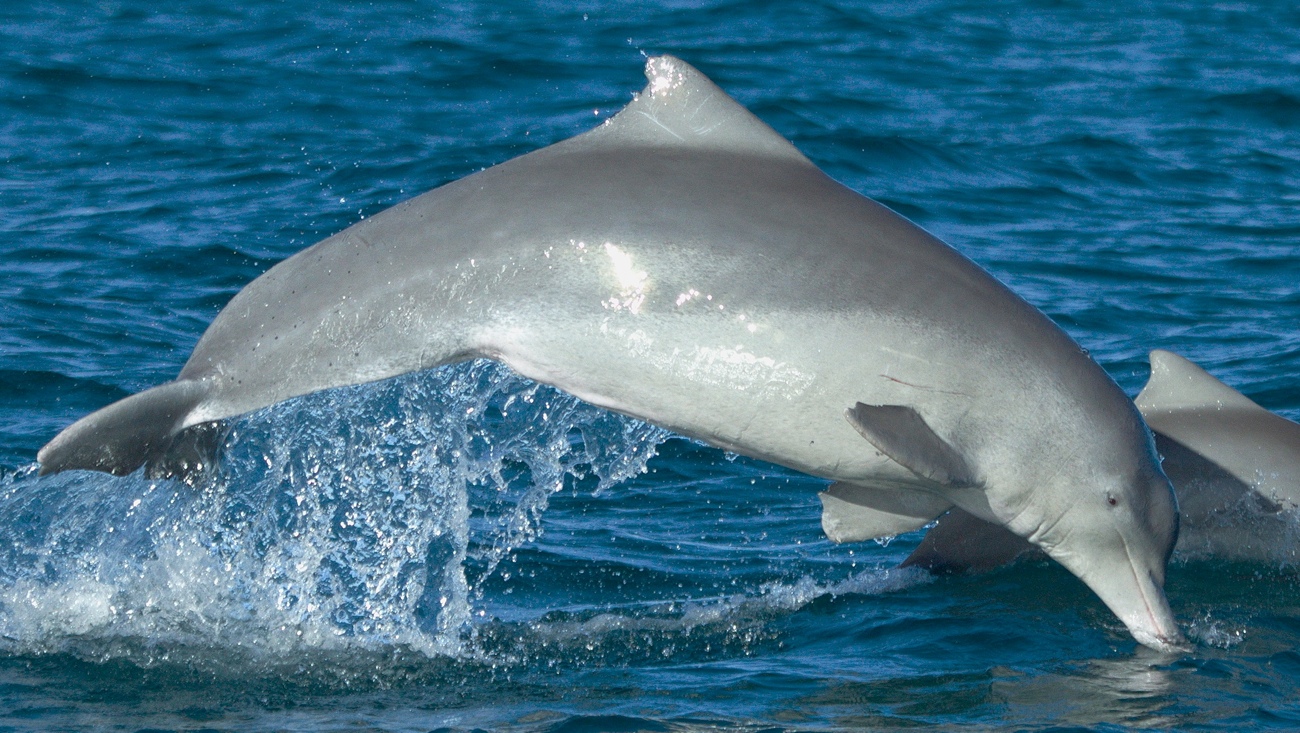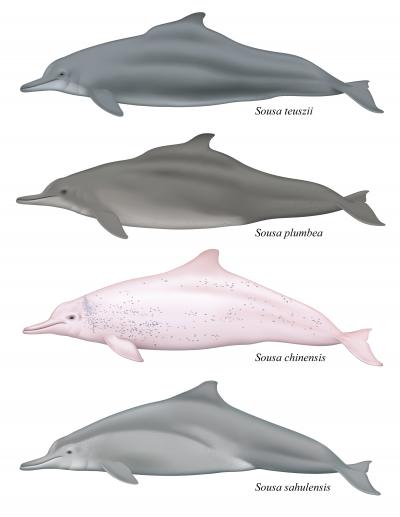'Cape-Wearing' Dolphin Turns Out to Be New Species

It's not every day that scientists identify a new mammal — especially one that can grow to be more than 8 feet (2.4 meters) long. But researchers recently named a new species of cetacean: the Australian humpback dolphin, Sousa sahulensis.
S. sahulensis hadn't been hiding in a mysterious part of the ocean; rather, the species had been misclassified. Once lumped in with its three cousins, S. sahulensis was finally determined to be a distinct species based on its skeletal structure, genetics, habitat and capelike coloration pattern, according to a new study published in the journal Marine Mammal Science.
"It is pretty rare to have the opportunity to name a new cetacean species," study co-author Howard Rosenbaum, of the Wildlife Conservation Society, wrote in an email to Live Science. "It is only [the] second species description of a new species of dolphin in the last 50 years." [Deep Divers: See Cool Photos of Dolphins]

Humpback dolphins get their name from a hump below their dorsal fin. They are found in river deltas, estuaries and coastal waters throughout the Indian, Pacific and eastern Atlantic oceans. Previously, scientists had only known of three separate species of humpback dolphins: an Atlantic species (Sousa teuszii), an Indo-Pacific species (Sousa chinensis, also known as the Chinese white dolphin) and an Indian Ocean species (Sousa plumbea).
However, last year, Rosenbaum and another group of researchers proposed in the journal Molecular Ecology that they found enough genetic evidence to support that the population off humpback dolphins off the northern coast of Australia should be considered a fourth species.
In terms of behavior and ecology, the Australian humpback dolphin is not all that different from its relatives, Rosenbaum said. Physically, what really sets S. sahulensis apart is its wardrobe. This dolphin has a light-colored belly and what looks like a dark gray "cape" that sweeps across the sides of its body and above the eyes. This two-tone pattern is not seen on any other humpback dolphin.
The new species is named sahulensis after the creature's range. It swims above the underwater Sahul Shelf, part of the Australian continental shelf, which stretches between Australia and the island of New Guinea.
Sign up for the Live Science daily newsletter now
Get the world’s most fascinating discoveries delivered straight to your inbox.
The International Union for Conservation of Nature (IUCN), which keeps a catalog of endangered species, has listed Sousa teuszii as vulnerable and Sousa chinensis as near threatened. (Sousa plumbea has not yet been evaluated.) It's not clear how many individuals there are in the S. sahulensis population, or what specific threats they face, but Rosenbaum said defining the species is a first step in learning what conservation efforts might be needed to preserve the creatures.
"The formal recognition and naming of a new species brings with it a need to formulate or update plans for protection of these dolphins," Rosenbaum said in a statement from WCS. "Humpback dolphins throughout their range are threatened with fisheries interactions, vessel impacts and development in their coastal habitats. Efforts to protect humpback dolphins and other coastal dolphins, and their most important habitats are essential for the survival of these species."
Follow Megan Gannon on Twitter and Google+. Follow us @livescience, Facebook & Google+. Original article on Live Science.










